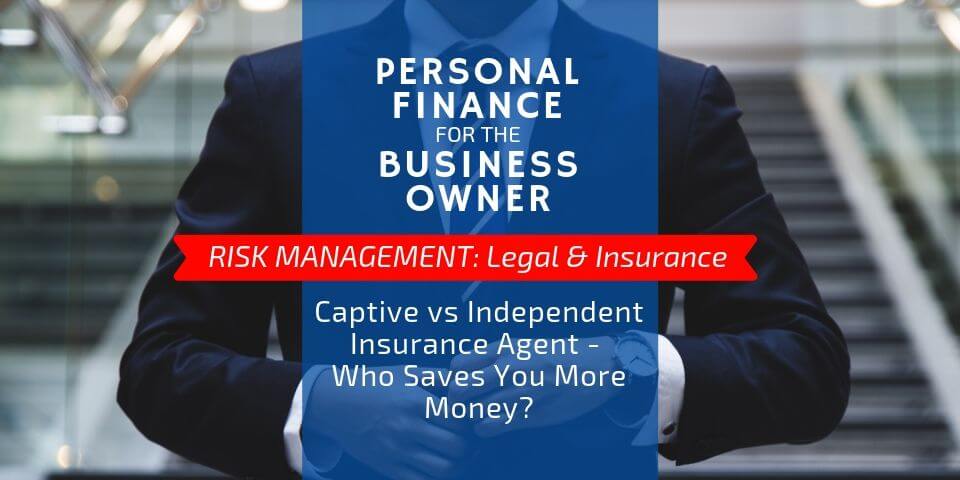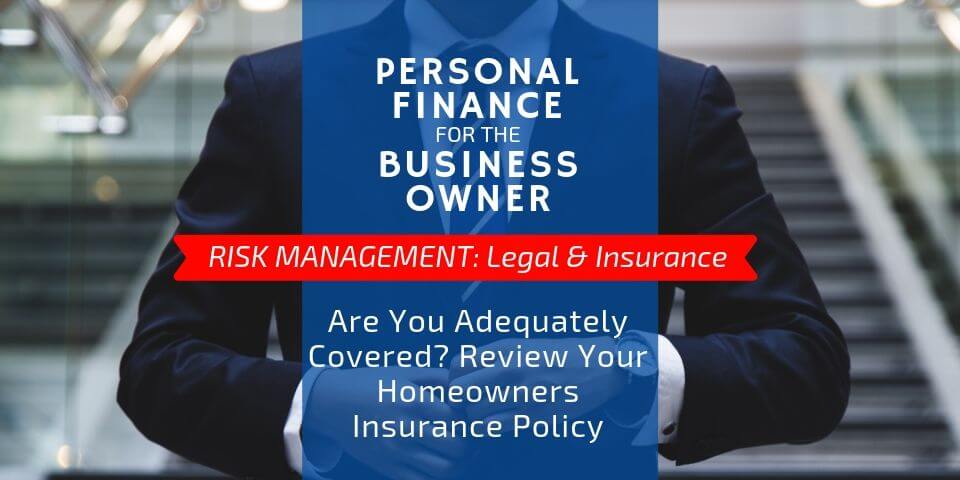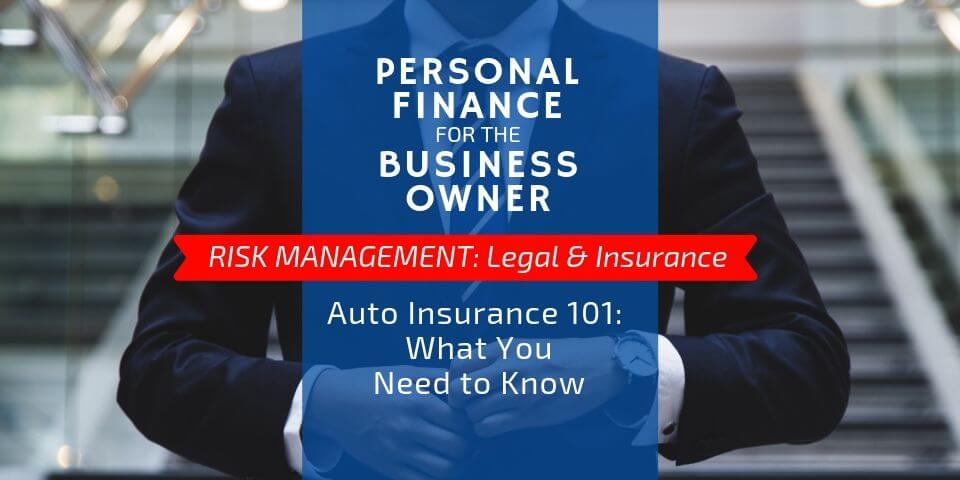
Captive vs Independent Insurance Agent – Who Saves You More Money?
July 16, 2019
Are You Adequately Covered? Review Your Homeowners Insurance Policy
July 23, 2019Auto Insurance 101 – What You Need to Know

If you drive a car, you must have auto insurance. In fact, it’s illegal not to have car insurance and if you happen to be in an accident, not only will you be fined, but you could be sued. If you’re a business owner, you’re trying to increase your net worth, not decrease it. Thus, you need to have adequate car insurance to protect yourself and your finances. So let’s talk Auto Insurance 101 – what you need to know about insurance for your car, truck, and other vehicles.
TIME INDEX:
- 01:34 – Auto Insurance 101
- 03:12 – The Basic Elements of Auto Insurance
- 03:26 – Protect Your Financial Resources: Liability Protection
- 07:04 – Protect Your & Your Passengers: Injury and Medical
- 08:54 – Protect Your Vehicle: Damage Control
- 14:18 – Auto Policy Extras
- 20:20 – Final Points to Consider
- 22:40 – Wrap Up
Before I took classes to become a CERTIFIED FINANCIAL PLANNER™, I didn’t know much about auto insurance. I’d go visit my insurance agent or broker, and I’d listen to the advice he or she would give me. Then, I’d purchase the recommended coverage and forget about it. However, once I learned about auto insurance, I realized there were a lot of details included in my policy that I needed to review. Choosing auto insurance can be broken down into three key decisions. But before I can get to those decisions, let me tell you about the basic elements included in most car insurance plans in the United States.
Automobile Liability Coverage
When it comes to your auto insurance, one of the first things you need to do is choose adequate liability coverage. Ultimately, that type of coverage helps protect your personal assets – your cash, your investments, etc. In a nutshell, liability coverage protects your financial resources if you are deemed to be at fault in a car accident. Your liability coverage will pay for auto repairs, medical costs for those involved in the accident, and other accident-related costs like legal fees. With the right insurance coverage, you would not be personally responsible for any or most of those costs.
Now, liability coverage is broken down into two basic areas – bodily injury and property damage.
Bodily Injury Liability
If you are found at fault in an accident, your auto insurance’s liability coverage is designed to cover the other party’s medical expenses. Obviously, medical bills can get extremely expensive, and you don’t want to be left personally responsible for those costs. That’s where your liability coverage comes into play.
In my policy under bodily injury liability, I elected to use $250,000 of coverage per person and $500,000 of coverage per occurrence. You may say, “Well, Justin, that seems awfully low,” or “That seems awfully high.” Well, we’re going to talk about another coverage I have in place called an umbrella policy soon. But I chose those amounts based on something that happened to a friend of mine.
When I was in high school, a dear friend of mine got into a really bad accident, and a couple of people were killed. Although he had bodily injury liability insurance through his auto insurance policy, his coverage limits were very low, and my friend didn’t have additional coverage in place through an umbrella policy. Thus, his insurance didn’t cover all of the expenses for the other parties involved in the accident. Their families sued my friend for damages, and he and his family ended up facing bankruptcy because they didn’t have adequate coverage in their auto insurance policy. I don’t want that to happen to me or my family, so I elect to use fairly high coverage amounts for bodily injury.
Property Damage Liability
The other type of liability coverage you need in your auto insurance is what’s called property damage liability coverage. If you cause an accident and damage another person’s automobile or property, this part of your policy should cover that person’s repair or replacements costs. Maybe you don’t hit another vehicle, though. Perhaps you run into a mailbox, a fence, a utility pole, a shed, a house, or a business. This liability coverage is designed to cover the costs of those repairs so you aren’t left personally liable for them.
On my auto policy, I’ve chosen $100,000 worth of property damage liability coverage per occurrence. Another friend of mine in high school was driving a little S10 pickup truck, and he happened to hit several cars in a wedding procession going down the road. There were people driving Corvettes, Maseratis, Lamborghinis, and Jaguars, and my friend side-swiped about five of those high-end cars. Like my other friend, he didn’t have the right amount of liability protection. Therefore, the owners of the vehicles ended up suing him personally to recover the costs of the damages he did to their vehicles. I don’t want that to happen to me, so I’ve chosen $100,000 of property damage coverage.
Uninsured Motorists Coverage
When choosing auto insurance, you should also make sure your policy includes uninsured motorists coverage. Like your liability insurance, this part of your policy covers bodily injury and property damage. However, it pays for injuries or property damage you or your passengers suffer in an accident when the driver at fault is uninsured or doesn’t have enough insurance to cover your expenses. Uninsured Motorists Insurance also comes into play if you’re involved in a hit-and-run accident where the other driver flees the scene.
On my auto policy within my uninsured motorist’s coverage, I’ve chosen bodily injury coverage of $250,000 per person and $500,000 per accident. For property damage, I have $100,000 of coverage per accident, but I would be responsible for a $200 deductible.
Medical Coverage
Another coverage you want to have in place through your auto insurance is medical expense coverage. Your liability coverage takes care of your injuries and your passengers’ injuries if you are at fault. Uninsured motorist coverage takes care of your injuries or your passengers’ injuries if an uninsured or under-insured driver is at fault in your accident. And ideally, the other driver’s auto insurance company will cover your medical expenses if someone else hits you.
However, this “medical expense” or “medical payment” coverage within your auto insurance will pay a specific amount of money for your medical care or your passengers’ medical care regardless of who is at fault. For instance, the medical payment portion of my auto insurance covers $5,000 of each person’s medical expenses. That probably won’t cover anyone’s full medical bill. However, it essentially provides you with extra medical coverage, AND it helps cover your medical expenses if you or your family members are injured while riding in someone else’s car.
Collision Coverage
So if your liability insurance covers other people’s medical expenses and property damage if you cause an accident, who or what pays for the damage to your vehicle? Well, this is where your collision coverage comes into play. If you hit another vehicle or object (not an animal), your collision coverage will pay to repair or replace your vehicle. Unlike your liability or uninsured motorists coverage, though, there’s a deductible involved with collision coverage.
I have a $1,000 deductible on my collision policy. Let’s hit say that I hit someone else’s car. When I do, I bang up my truck to the tune of $4,500 of necessary repairs. Well, I’m going to pay the first $1,000 out-of-pocket, and then my insurance company will cover the remaining $3,500.
Some years ago, I was backing out of our driveway. We were renting a house while we were building our current farmhouse, and I backed square into a tree. Well, when my Ford Excursion hit this tree, a limb fell off it and crunched the back, right quarter panel of my vehicle. I took it to the body shop and learned that it would cost me $2,200 to fix my car. Since I already had a $1,000 deductible, it didn’t make sense for me to file a claim because my premium cost increases would exceed the benefits I would receive from the insurance company. So I just decided not to file it.
Comprehensive Coverage
Car accidents aren’t the only thing that causes vehicle damage, though. Trees fall. Rocks hit windshields. Deer run out into the road. Tornadoes and hurricanes strike. If your car incurs damage from anything other than a car accident, comprehensive coverage takes over on your auto insurance policy. Yet, like collision coverage, you will owe a deductible when these types of events occur.
A few years ago, a really bad hail storm hit East Tennessee. For a while, cars around Knoxville looked like they had been driven onto a driving range at a golf course. There were dents all over people’s vehicles! Well, your auto policy’s comprehensive coverage is going to step in and cover that type of damage. It will also cover the deer. If a deer hops out in front of me while I’m driving home, then comprehensive’s going to repair my vehicle.
I have a $0 deductible on my collision policy. “Why is that?”, you ask. Well, I live in the country, and deer run out in the road all the time. I’ve even hit deer before. Now, they haven’t done any damage to my big truck yet, but there are a lot of deer. So, I have a $0 policy deductible.
Additional Coverages
What I’ve listed above are the types of coverages included within most auto insurance policies. However, insurance companies offer riders, or additional coverages, if you need them.
Extended Benefits Coverage
First of all, you can request extended benefits coverage. Although your policy includes reimbursements and payments for medical costs incurred in accidents, most don’t cover long-term disabilities. Thus, extended benefit coverage provides long-term disability benefits for you or your passengers if any of you become disabled as a result of an auto accident.
Roadside Assistance Coverage
Perhaps the most common additional coverage people request is what’s called towing and labor, or roadside assistance coverage. At one point, I did have towing and labor as part of my automobile policy, and I paid roughly $3.16 a month for it. Any time I had an issue, I could call the insurance company, and someone would bring me gas, tow my car, or help me fix a flat tire. Essentially, they’d provide services worth about $100 each occurrence. Now, I subscribe to AAA’s roadside assistance services, but if you don’t have something like that in place, you may want to add roadside assistance coverage to your auto insurance policy.
Rental Reimbursement Coverage
Another coverage you can add to your policy is rental reimbursement. Let’s say that you were in a car accident. Well, your car will be in the shop for several days or weeks. If you have a rental reimbursement policy, your insurance will pay for you to rent a car while your car is in the shop. If you don’t have a “spare” car or the extra money available to rent a car, you may want to add that to your auto insurance policy.
Rental Car Coverages
Speaking of rental cars, if you carry comprehensive and liability coverage on your personal vehicle in the United States, coverage will typically extend to your rental car if you rent a vehicle similar in value to yours. So if I’m insuring my 2019 Ford F150, and I go and rent a mini-van, truck, or car that’s of equal or lesser value, then my policy covers any damages done to that rental car. Of course, I’ve verified that with my insurance agent, but you’ll want to check with your agent before you make assumptions about your coverage.
You may also want to talk to your insurance agent and the rental car company about whether you need to pay for collision waivers or personal affect waivers while you’re renting a car.
Summing up Auto Insurance:
So let’s condense all this information down. Here are the most important points I can give you about auto insurance:
- Keeping your liability limits low may save you money on your insurance premiums.
- Yet, lower liability coverage may leave you personally responsible for any accident-related costs.
- If you increase your liability limits, your premiums will probably increase.
- Yet, increasing your deductibles may decrease your premiums.
- If you drive an older-than-dirt car, you may not need comprehensive coverage, but you probably want collision coverage.
- Yet, have liability coverage on every vehicle you drive.
If you aren’t sure where to start, talk to your insurance agent. You want the most coverage for the least amount of money. However, don’t be so thrifty that you leave yourself under-insured. Paying a few extra dollars each month seems like a small price to pay to prevent losing thousands of dollars or hundreds of thousands of dollars if you’re under-insured and in an auto accident.
Stay with us in this Personal Finance for the Business Owner Series as we get into the ins and outs of homeowners insurance that you, as a business owner, need to know.



